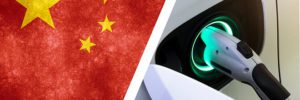
Governments in North America and Europe are seriously concerned about China’s growing dominance of the EV industry. Chinese automaker BYD recently surpassed Tesla as the world’s leading seller of EVs, and it’s only one of several Chinese-owned brands that are already selling cars in the US and the EU.
However, the world’s #2 and #3 auto markets differ in terms of their response to the threat from #1. So far, the US has taken a much more protectionist stance than has the EU. This divergence is reflected in the mix of cars on sale—Chinese-made EVs from several brands are common sights on the streets of Oslo, but so far, Geely-owned Volvo and Polestar are the only Chinese brands to gain a foothold in the US car market (BYD makes electric buses in California).
The US currently imposes a 27.5 percent tariff for all Chinese-made cars, and the Inflation Reduction Act creates an additional barrier with its stipulation that only EVs made in North America qualify for tax credits. (Some fear that Chinese firms could do an end run around such barriers by producing EVs in places like Mexico and Brazil.)
The EU currently has a tariff of only 10 percent on imported cars, but the European Commission is considering whether to impose higher tariffs, and other protectionist measures are in the wind. France recently revamped its rules on EV purchase incentives to include limits on the amount of carbon emitted in manufacturing. In practice, this is expected to favor vehicles made in France over models manufactured in China.
Ironically, another tool to stem the flood of cars both green and brown (China is exporting lots of gas-burners too) could be a new tax on the embedded carbon emissions of imported goods. The EU has begun phasing in a carbon border tax, which requires importers to report the embedded CO2 emissions of imported products.
The EU’s Carbon Border Adjustment Mechanism (CBAM) is aimed mainly at energy-intensive raw materials such as iron, steel, cement, fertilizer and aluminum. It’s intended to reduce carbon emissions, not to protect European automakers from foreign competition, but could the law, intentionally or not, apply to EVs imported from China?
Accounting giant KPMG predicts: “Initially, the automotive industry will only be indirectly affected via the supplier network and only directly in specific cases.” However, the industry is certain to feel the effects. “With a 12% share of steel in intermediate goods, the automotive industry plays a crucial role in raw material markets.”
Some take a contrarian view, arguing that the West should welcome China’s speeding up the energy transition with state subsidies. The Economist (generally a champion of free trade) points out that electrification is going to reshape the market for cars in any case, regardless of China trade policies, and argues that policymakers should consider the gains from letting trade flow, and the benefits to the environment. “The lesson from the rise of Japanese and South Korean carmakers in the 1980s is that competition spurs local firms to shift up a gear, while the entrants eventually move production closer to consumers.”
Our view is that the legacy automakers have had a decade to shift up a gear or two, and they’ve failed. Indeed, it often seems that most of them (and their co-dependents) would rather shift into reverse if they could.
Of course, at the risk of sounding like a broken record (younger readers, this means something that repeats endlessly), there could be a way that automakers can sell lots of cars while protecting American jobs and cleaning up our air: forget about quarterly earnings for a while, stop lobbying against electrification, commit the necessary resources to make a speedy transition to EVs, and don’t look back.
Sources: Politico, The Economist, Autonomy, Reuters, KPMG
from Charged EVs https://ift.tt/FwM3vyX


No comments:
Post a Comment